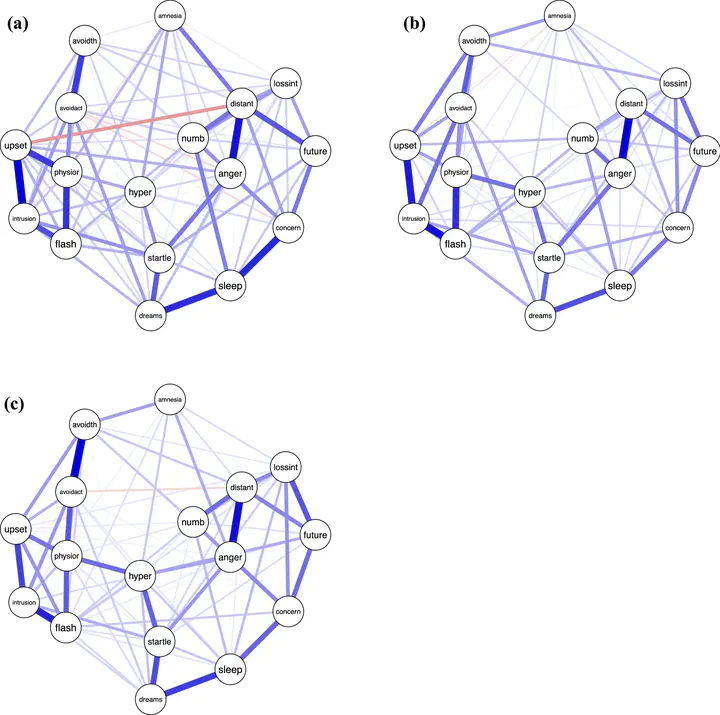Changes in the Network Structure of Post-traumatic Stress Disorder Symptoms Among Earthquake Exposed Adolescents in China:A 2-Year Longitudinal Study
 Image credit: Fig1
Image credit: Fig1
摘要
Despite considerable studies focused on the symptoms of posttraumatic stress disorder (PTSD), little is understood about how symptoms of PTSD naturalistically change over time. Using network analyses approaches, the current study aimed to understand the nature of the association between PTSD symptoms at different time points among adolescents who experienced an earthquake. This study enrolled 900 youth survivors who completed 3 assessments with the Child PTSD Symptom Scale at 1 year, 1.5 years, and 2 years after the Wenchuan earthquake. A graphical Gaussian model (GGM) was used to investigate how symptom networks changed across these time points and to identify the symptoms that were the most central within the network. Results from GGM indicated that different symptoms were observed to have highest centrality at different time points. Feeling distant or cut off from others, avoid thoughts and feelings about the trauma, and feeling irritable or having angry outbursts appeared as the node with highest centrality at 1 year (T1), 1.5 years (T2), and 2 years (T3) post-earthquake, respectively.